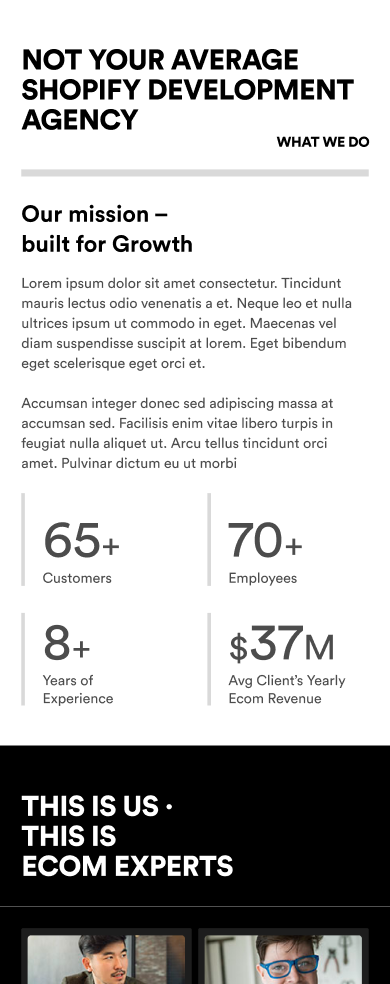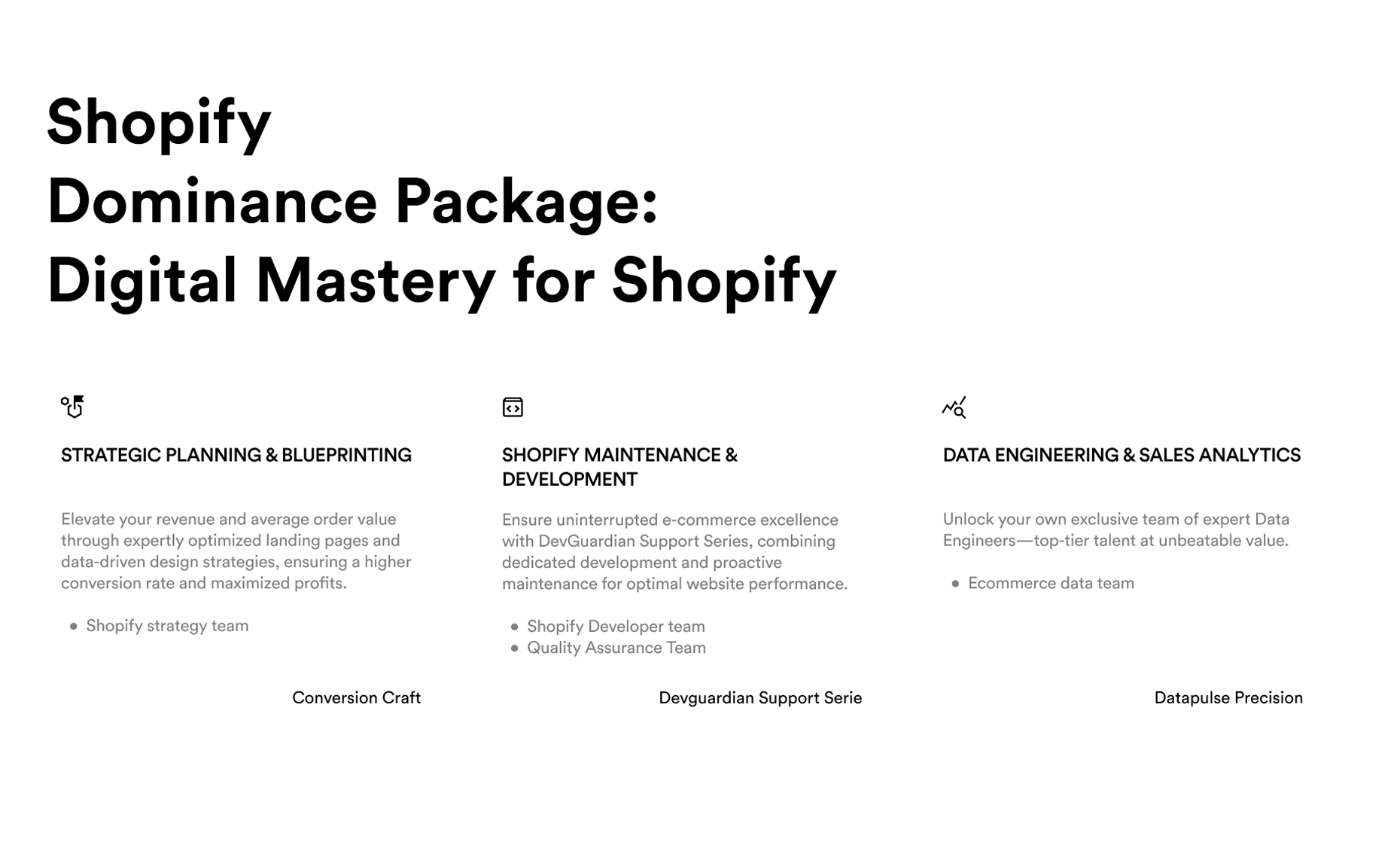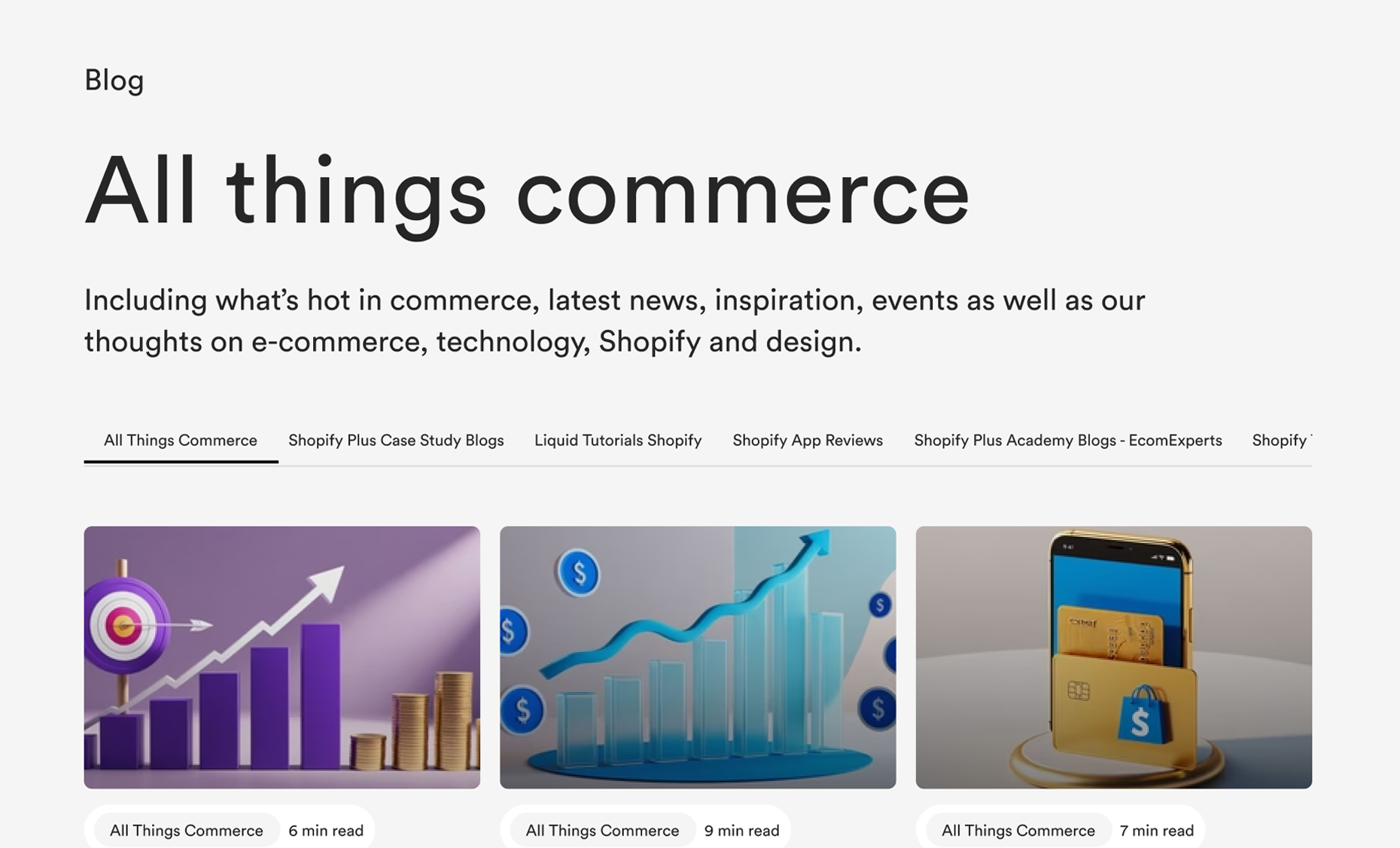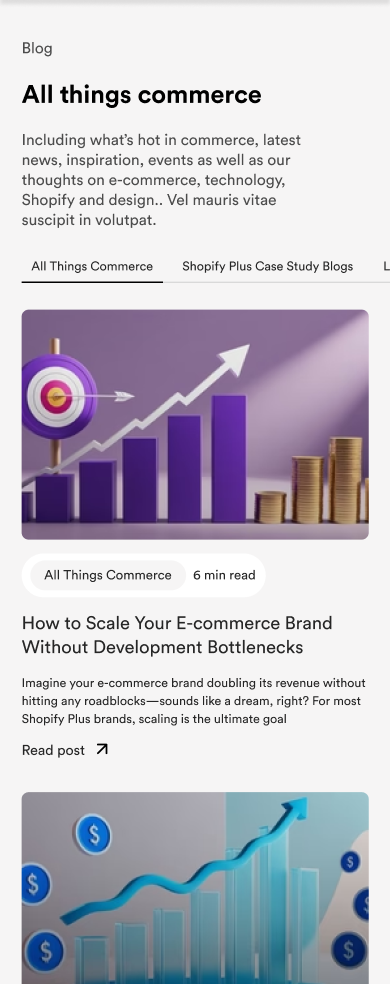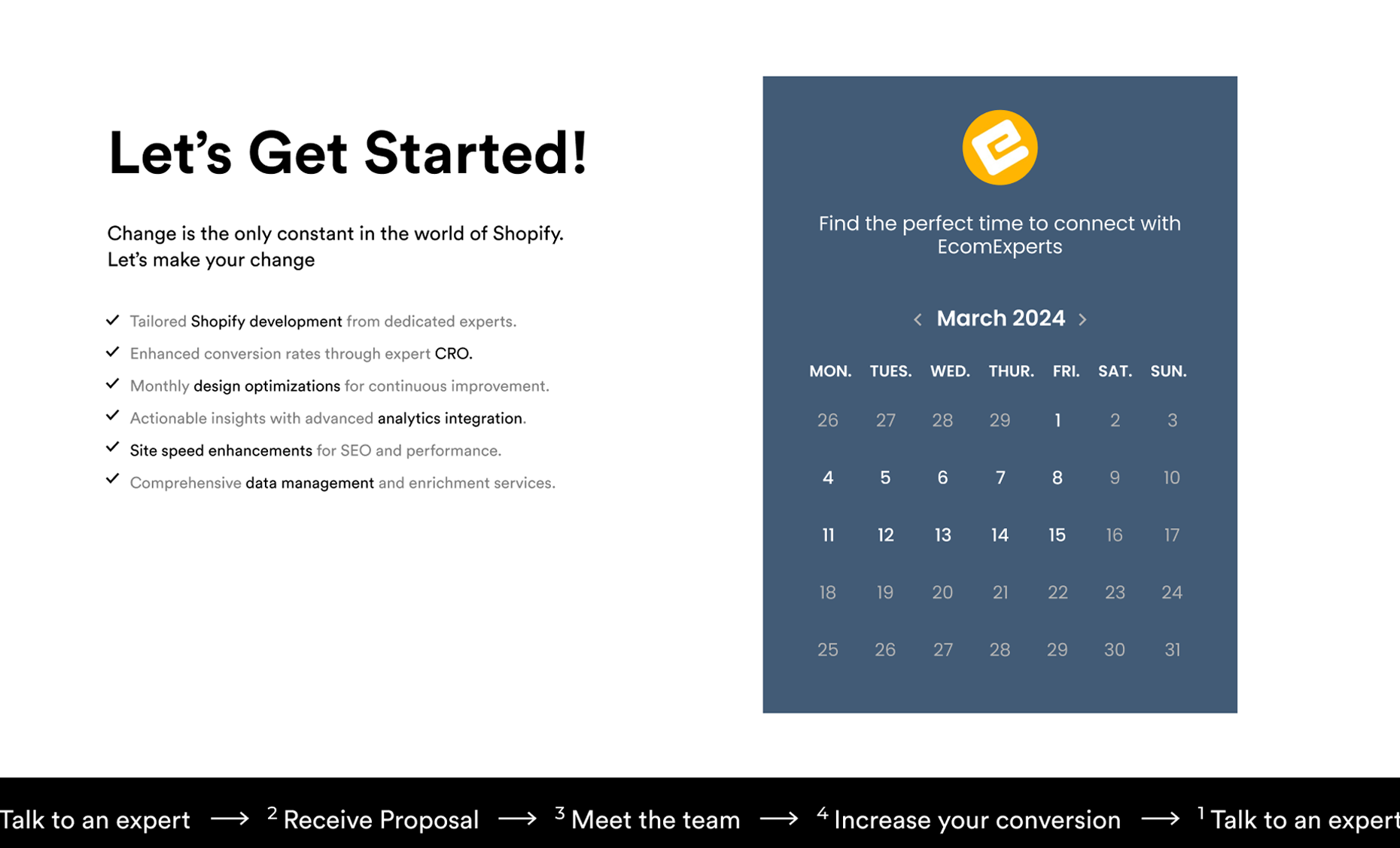When high-traffic periods like Black Friday and Cyber Monday roll around, many Shopify merchants experience a surge in visitors, leading to increased strain on their website’s performance. Store speed is crucial during these times because a slow-loading site can quickly lead to cart abandonment and missed sales opportunities. In fact, research shows that a 1-second delay in page load time can decrease conversion rates by 7%, and 53% of visitors will abandon a site that takes more than 3 seconds to load.
This blog will walk you through a range of technical strategies to optimize your Shopify Plus store's speed and performance, ensuring that your store can handle traffic spikes while delivering a seamless user experience. These actionable tips will help you stay prepared for big sales events and ongoing high-traffic periods.
Why Store Speed Matters During High-Traffic Periods
During high-traffic periods like Black Friday, Cyber Monday, and other major sales events, the speed of your Shopify Plus store is critical. The primary reason is simple: customer expectations for fast, seamless online experiences are higher than ever, and any delays can lead to a significant loss of sales and damage to brand reputation. Here are several reasons why store speed is crucial during these periods:
1. Conversion Rates and Sales
Research consistently shows that page load speed directly impacts conversion rates. According to studies, a 1-second delay in page load time can reduce conversions by 7%, and when this is scaled to a high-traffic period, that could translate to thousands of dollars in lost revenue. Visitors expect pages to load within 2-3 seconds, and if your store doesn’t meet this expectation, potential customers are likely to abandon their carts and seek alternatives elsewhere.
For example, during high-traffic sales events, even a minor delay can lead to a significant increase in cart abandonment rates. Customers are often navigating between multiple sites and will leave your store if it’s slower compared to competitors. The faster your store loads, the more likely customers are to stay, browse, and make purchases.
2. Impact on Search Engine Rankings (SEO)
Site speed also plays a critical role in how Google and other search engines rank your store in search results. Google considers page speed as a ranking factor, which means that slower stores could see a drop in organic traffic, especially during important sales periods. Faster-loading sites are prioritized because they provide a better user experience, which is what Google aims to offer its users.
By optimizing your store's speed, especially during periods when customers are searching for deals (like Black Friday), you increase your chances of appearing higher in search results, thereby attracting more organic traffic. If your store slows down during these key times, your ranking can suffer, and your site might lose visibility just when you need it most.
3. Customer Experience and Retention
User experience is the backbone of e-commerce success. Studies show that 53% of mobile users abandon a site that takes longer than 3 seconds to load. For returning customers, slow speeds create frustration, and they may choose to shop elsewhere in future sales events, leading to long-term revenue losses.
During high-traffic periods, where customers are rushing to complete their purchases quickly, a slow-loading store can severely affect their shopping experience. Not only can this result in cart abandonment, but it can also tarnish your brand’s reputation, causing loyal customers to lose trust in your ability to provide a seamless experience.
4. Scalability and Server Load
As your site traffic increases exponentially during sales events, your server infrastructure will be put to the test. If your store isn’t optimized for high traffic, it may crash or experience significant slowdowns, leading to downtime and lost revenue. A slow-loading store during these critical times not only affects immediate sales but also damages your brand's reputation.
By ensuring your Shopify Plus store is optimized for high-traffic scenarios, you avoid server overload and ensure a consistent shopping experience for your visitors. Load testing before these events can help identify bottlenecks and prevent issues that might occur as more visitors flock to your site.
5. Mobile Optimization
With more and more customers shopping via mobile devices, speed optimization for mobile is more important than ever. Mobile users, in particular, expect fast load times. During high-traffic periods, ensuring that your store is mobile-optimized can greatly improve user experience and keep customers on your site longer, increasing the likelihood of conversions.
Mobile shoppers are often more impatient than desktop users, and a slow mobile experience can mean that you miss out on potential sales during peak periods. A fast, mobile-optimized store improves the chances of these users making purchases, especially when they are comparing deals from multiple sources during a sale.
How to Optimize Shopify Plus Store Speed for High-Traffic Periods
To ensure your Shopify Plus store is fully prepared for high-traffic events like Black Friday or Cyber Monday, optimizing speed is essential. A slow-loading site can result in abandoned carts and lost revenue, especially during these critical sales periods.
Here are 6 key ways you can boost your Shopify Plus store's speed during high-traffic periods:
1. Use a Content Delivery Network (CDN) for Faster Global Load Times
A Content Delivery Network (CDN) helps distribute your website’s content across multiple servers worldwide, significantly reducing the load time for users in different geographical locations. This section will dive into the technical benefits and explain how a CDN can help during high-traffic periods.
Technical Aspects:
- How a CDN Works: A CDN stores static content (images, CSS, JavaScript) on multiple servers worldwide, reducing latency by serving content from a server closer to the visitor.
- Shopify’s Built-In CDN: Shopify automatically uses the Fastly CDN for base content delivery, but additional media-heavy stores might benefit from integrating a third-party CDN like Cloudflare for enhanced performance.
Actionable Tip: Consider using a third-party CDN for additional caching and performance optimization. Services like Cloudflare offer advanced features like DDoS protection, load balancing, and advanced caching options.
2. Compress and Optimize Media Files
Large, unoptimized images and videos are among the leading causes of slow page load times. Media compression is crucial to reduce file sizes without compromising quality, making it a key factor in improving performance during high-traffic events.
Technical Aspects:
- Image Compression: Tools like TinyPNG, Kraken.io, or Shopify’s built-in image compression can significantly reduce file sizes without sacrificing image quality.
- WebP Format: Convert images to the WebP format, which offers superior compression without a noticeable loss of quality compared to standard JPEG or PNG.
- Lazy Loading: Implement lazy loading for images below the fold, so they load only when the user scrolls down the page, reducing initial load times.
Actionable Tip: Ensure all images are optimized for the web and convert them to WebP format for better performance. Test your store’s image load times using Google Lighthouse.
3. Optimize and Minimize Third-Party Apps
While third-party apps add functionality to your Shopify Plus store, they also introduce extra code, which can slow down your store’s performance. Too many apps loading unnecessary scripts can create performance bottlenecks, particularly during high-traffic events.
Technical Aspects:
- App Audit: Regularly audit all installed apps to ensure that they are necessary and not adding excessive load times. Remove any apps that are no longer in use.
- App Performance Testing: Use Shopify’s Theme Inspector or Google PageSpeed Insights to see how apps impact load time and remove any underperforming or redundant apps.
- Lightweight Alternatives: Where possible, consolidate app functionality into fewer, more efficient apps. For example, some apps provide multiple features (SEO, marketing, analytics), reducing the need for several apps.
Actionable Tip: Perform a quarterly review of all third-party apps and replace underperforming ones with more lightweight, efficient options.
4. Clean Up Unused Code and Scripts
As your store evolves, unused code (from removed apps or theme customizations) can accumulate and bog down your store’s performance. Cleaning up this code is essential for reducing page load times, especially during high-traffic periods.
Technical Aspects:
- Unused CSS and JavaScript: Shopify’s Theme Editor can be used to clean up CSS and JavaScript files that are no longer needed.
- Minify CSS and JavaScript: Minification removes unnecessary characters from code (like spaces and comments), reducing file sizes and improving load times.
- Defer Non-Essential JavaScript: By deferring non-essential scripts (like tracking codes), you can prioritize loading critical page elements first, which improves the user experience.
Actionable Tip: Use Google Lighthouse or Shopify’s Theme Inspector to identify and remove unused CSS and JavaScript files, then minify the remaining code for better performance.
5. Use Browser Caching to Speed Up Repeat Visits
Browser caching allows your site’s static assets (like images, CSS, and JavaScript files) to be stored locally on the visitor’s device, reducing the need to reload all elements on repeat visits. This can dramatically improve load times, especially for returning customers during high-traffic periods.
Technical Aspects:
- Cache-Control Headers: Work with a developer to configure cache-control headers that define how long static assets like images and CSS files are stored in the browser’s cache.
- Third-Party Solutions: Tools like Cloudflare can help optimize browser caching and automate cache management.
Actionable Tip: Set up caching rules for your most commonly accessed resources to speed up repeat visits. Use tools like GTmetrix to evaluate your caching effectiveness.
6. Load Testing Before High-Traffic Events
Before major sales events, it’s important to perform load tests to simulate high-traffic scenarios and identify any performance bottlenecks. This will ensure that your Shopify Plus store can handle peak traffic without crashes or significant slowdowns.
Technical Aspects:
- Simulate Traffic Spikes: Use tools like LoadImpact or Pingdom to simulate thousands of concurrent users and monitor your store’s response time.
- Analyze Server Load: Look for areas where your server’s response times are slow or where bottlenecks occur (e.g., slow-loading apps or third-party integrations).
- Fix Bottlenecks: After identifying performance issues, implement solutions such as optimizing images, reducing third-party apps, or increasing server capacity.
Actionable Tip: Run load tests at least two weeks before major sales events to identify and address performance bottlenecks.
Conclusion
Optimizing your Shopify Plus store’s speed during high-traffic events like Black Friday and Cyber Monday is essential for ensuring a seamless shopping experience and maximizing conversions. By focusing on strategies like CDN integration, media compression, third-party app optimization, code cleanup, and load testing, you can ensure your store remains fast and responsive during peak sales periods.
Ecom Experts is here to provide specialized services for Shopify Plus speed optimization, offering personalized audits, technical solutions, and ongoing performance improvements to help your store thrive during the busiest times of the year.
FAQs
Q1. How can I improve my Shopify Plus store’s speed?
A1. You can improve store speed by using a CDN, compressing media files, auditing third-party apps, and cleaning up unused code. Regular performance audits and load tests are essential to ensuring peak performance.
Q2. What is a CDN, and how does it help my Shopify store?
A2. A CDN (Content Delivery Network) distributes your content across servers worldwide, reducing load times by serving data from the server closest to the customer. This is especially useful during high-traffic events to ensure faster load times.
Q3. How can I test my Shopify Plus store for high-traffic periods?
A3. Use load-testing tools like LoadImpact or Pingdom to simulate heavy traffic and monitor your store's performance under stress. Address any bottlenecks before major sales events.
Q4. Why should I compress my images for Shopify Plus?
A4. Compressed images reduce file sizes, which helps your store load faster, improving user experience and conversion rates. Tools like TinyPNG and WebP format can significantly optimize image sizes without compromising quality.
Q5. How does lazy loading improve Shopify Plus store performance?
A5. Lazy loading delays the loading of images and videos until they are needed, reducing the initial load time and speeding up your store. This improves performance, especially during high-traffic periods, by minimizing resource use upfront.





